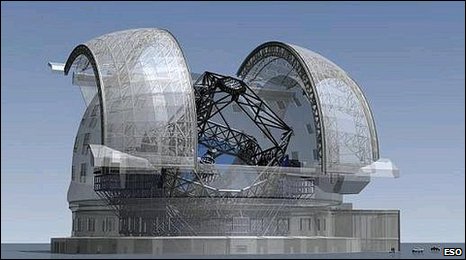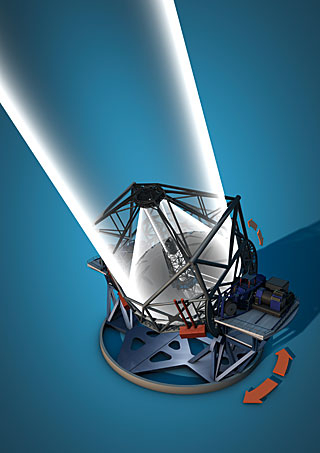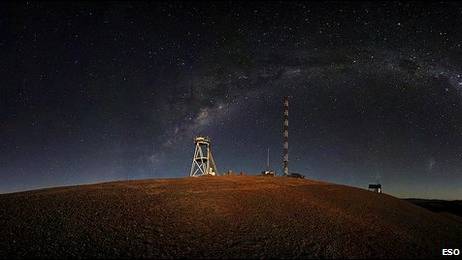Location chosen for European "Extremely Large Telescope"
Source: news.bbc.co.uk

Europe has chosen the place it wants to build the world’s biggest telescope.
The observatory will be constructed on Cerro Armazones, a 3,000m-high mountain in Chile’s Atacama Desert.
The E-ELT (European Extremely Large Telescope) will have a primary mirror 42m in diameter - about five times the width of today’s best telescopes.
Astronomers say the next-generation observatory will be so powerful it will be able to image directly rocky planets beyond our Solar System.
It should also be able to provide major insights into the nature of black holes, galaxy formation, the mysterious "dark matter" that pervades the Universe, and the even more mysterious "dark energy" which appears to be pushing the cosmos apart at an accelerating rate.
Final go-ahead for the E-ELT is expected at the end of this year.
The European Southern Observatory (Eso) organisation which is managing the project says it hopes the telescope can be operational by 2018.
The estimated cost is in the region of a billion euros.
The decision on the E-ELT site was taken by the ESO Council after several years of study at competing locations that included other places in Chile, and in the Canary Islands, Spain.

The 5,500-tonne behemoth could be operating by 2018.
Cerro Armazones is just 20km from Cerro Paranal, where Eso operates its Very Large Telescope facility - a suite of interconnected telescopes that includes four units with primary mirrors measuring 8.2m.
Video from: YouTube.com
Like Paranal, Armazones will enjoy near-perfect observing conditions - at least 320 nights a year when the sky is cloudless. The Atacama’s famous aridity means the amount of water vapour in the atmosphere is very limited, reducing further the perturbation starlight experiences as it passes through the Earth’s atmosphere.
Coming up with a workable design has been a challenge. It is impossible to make a monolithic mirror on such a scale and so the primary reflecting surface will be composed of 984 hexagonal segments, each 1.45m in size.
The E-ELT will thus be able to gather 15 times more light than the largest optical telescopes operating today. It will also provide images 15 times sharper than those from the Hubble Space Telescope.
The huge telescope is one of the major projects listed on a roadmap of research infrastructures that Europe feels it needs to fulfil its scientific goals over the next 20 years.
Other facilities range from high-powered laser systems through to a plan to construct the world’s most advanced polar ice-breaker.
Article from: news.bbc.co.uk























